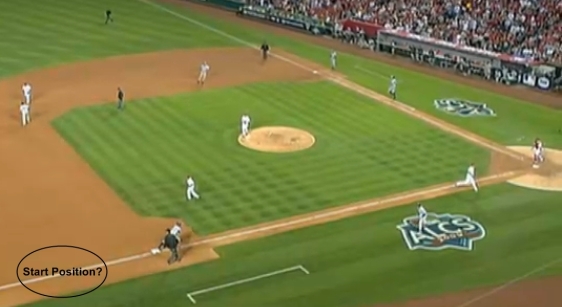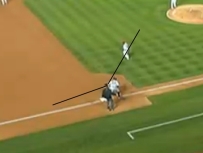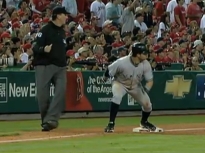Samuel Deduno’s Crazy Fastball, Explained…Maybe
Like many other Twins fans, Samuel Deduno fascinates me. Thanks to some terrible starting pitching from the likes of Jason Marquis and Carl Pavano, Deduno earned his first extended stint in the major leagues in 2012. Immediately he dazzled fans and frustrated hitters with his success relative to the rest of the rotation despite his lack of control and self-proclaimed “crazy” fastball (he’s admitted he has no clue how to control its movement).
Deduno started the 2013 season in the minor leagues again, but received another call-up and improved significantly. He cut his walks from 15% to 9% of batters faced, and though his strikeouts also dropped, he combated that by allowing fewer home runs.
A few weeks ago, I chronicled Deduno’s fastball by showing that whether by accident or on purpose, Deduno’s moving fastball has become almost exclusively a cutter. In the past, it also would sink into the hands of a righthanded batter, but for whatever reason that movement has been eliminated.
Another fascinating fact of Deduno’s fastball is how much it drops, regardless of horizontal movement. MLB pitchers average nearly 9 inches of “rise” (relative to a spinless ball with no gravity), but Deduno’s gets only 2 inches of rise. His fastball drops more than some pitcher’s sliders and change-ups, which is pretty impressive. And while I’m no expert of the sciences, I may have figured out what the hell is going on with his fastball.
But first, a quick anecdote that gets passed around by some of the Twins part-time staff (I’m an usher at Target Field and have heard this story a few times). A few years ago, the Yankees were in town and Derek Jeter faced Deduno. The story goes that Jeter grounded out, and upon returning to the dugout he started shaking his fist violently while saying, “His fastball moves all over the (redacted) place!” He then went to a security guard and asked who was the pitcher on the mound. The security guard replied with, “He says, ‘My name is Sam Deduno and I have a crazy fastball.'”
But I digress. There are plenty of pitchF/X websites out there, and for reasons I cannot explain, I’ve become rather attached to the Texas Leaguers website. I typically pay the most attention to velocity and movement, but something caught my eye the last time I was drooling over Deduno’s data. There is also a number charted for every pitch that is titled “Spin Rate” and Deduno’s fastball spin rate is absolutely absurd. If you want to look at his cutting fastball since 2013, it’s 606 revolutions per minute. His sinking fastball is at 727.
“Yeah, okay, but why does that matter?” the casual observer would note. Well, unfortunately Texas Leaguers does not keep track of the average spin rate for fastballs and cutters, but I’ll post a variety of pitchers for context. All data is from the start of the 2013 season to the present.
Fastballs
Glen Perkins – 2,475
R.A. Dickey – 1,543
Josh Collmenter – 2,259
Rick Porcello – 1,867
Joe Saunders – 1,944
Cutters
Mariano Rivera – 1,580
Kevin Correia – 1,243
Dan Haren – 1,243
Andy Pettitte – 1,521
Scott Feldman – 958
Now can you understand why I said that Deduno’s fastball spin rate was absurd. Remember when I said that his pitch rises far less than the average MLB fastball? Well you might be aware of the Magnus effect, where the rotation of a ball affects its flight path. Now that it’s warming up outside, you have another excuse to inflate a beach ball. Go ahead and do it, then try to throw it overhand. Because of the backspin on the ball, no matter how hard you try to throw it straight forward, it will also rise. If you try to throw it underhand, it’s going to sink because of the topspin. Major league fastballs appear to rise because of the Magnus effect, causing it to resist the force of gravity. Because Deduno’s fastball has (relatively) little spin on it, the Magnus effect is reduced and it doesn’t rise as much.
Now why does Deduno’s fastball have so little spin? This is one of those cases where I wish I could see a slo-mo of his fastball, because I get the feeling that the ball might slip out of his hand a bit, kind of like Robert Coello’s “forkleball.” Speaking of which, let’s check out some of those pitches that aren’t supposed to spin very much.
Other Pitches
R.A. Dickey knuckleball – 901
Steven Wright knuckleball – 1,001
Robert Coello “forkleball” – 950 (it’s classified as about 4 different pitches and I found the average)
Ladies and gentlemen, here is why Samuel Deduno’s fastball is crazy. It supposedly spins less than noted knuckleballer R.A. Dickey’s famed knuckleball. I’ll admit that seems absurd (especially after watching the “forkleball” GIF above) but remember, that GIF is merely a highlight of one of the best Coello has thrown. He’s thrown many more that had far more spin than that pitch. The same is true of Dickey’s knuckleball; he’s thrown tons of them that failed to achieve a lack of spin. While my understanding is likely wrong, I still prefer to think that Samuel Deduno is practically firing 90 MPH knuckleballs at Kurt Suzuki and Josmil Pinto. That’s probably why Derek Jeter said it was like the ball was shaking as it came to home plate in the anecdote above, Deduno has no idea where his fastball is going, and why his control has been below average for his career.
Samuel Deduno’s crazy fastball, explained. Maybe.


